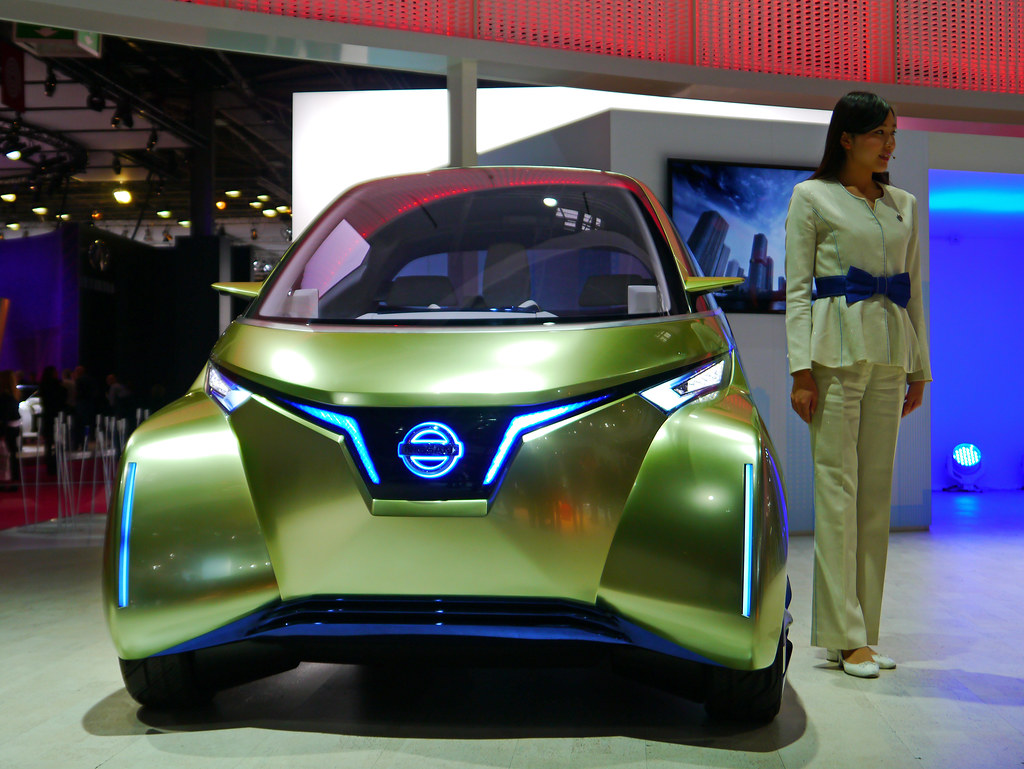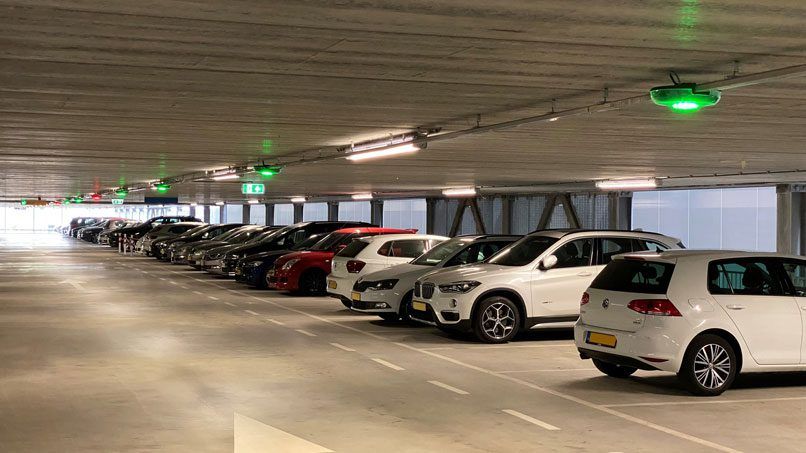
The idea of cars that park themselves once seemed like a futuristic dream, a concept pulled directly from the pages of science fiction. Yet, as we approach 2025, self-parking vehicles have transitioned from speculative fantasy to tangible reality, rapidly becoming an integral, even expected, feature in modern transportation. These advanced systems are not merely a convenience; they are actively reshaping how we interact with our vehicles and, profoundly, how urban planners envision and design parking infrastructure across the United States. This transformative shift prompts a vital question for consumers: how safe and reliable are these sophisticated self-parking systems in their real-world applications?
As senior media editors dedicated to providing clear, unbiased insights, we recognize the paramount importance of understanding the practical implications of this rapidly evolving technology. Our goal is to cut through the marketing hype and provide a comprehensive, data-driven analysis from a consumer’s perspective, much like the rigorous evaluations championed by Consumer Reports. We’ll delve into the core functionalities, explore their real-world deployment across various sectors, and scrutinize the critical factors that define their safety and reliability. For anyone considering embracing this technology, or simply curious about its impact, a deep dive into its mechanics, benefits, and inherent challenges is essential.
From densely packed city centers to sprawling airport complexes, automated car parking systems are already making their mark, promising efficiency, space optimization, and enhanced user experiences. However, the path to seamless integration and universal trust involves navigating a landscape filled with technological complexities, regulatory considerations, and the fundamental question of how effectively these systems perform when the stakes are real. Join us as we explore the leading innovations, examine their real-world performance, and equip you with the knowledge to make informed decisions about the future of parking.

1. **Automated Car Parking Systems (ACPS) Fundamentals**
Automated Car Parking Systems (ACPS) represent a significant leap forward in vehicle storage technology, moving beyond traditional manual parking methods. At their core, these systems are engineered to maximize space utilization and streamline the entire parking process, leveraging a sophisticated array of mechanical platforms, lifts, shuttles, and integrated control software. This interconnected network works in concert to park and retrieve vehicles with minimal, if any, human intervention, making them indispensable in environments where land is either limited or exorbitantly expensive.
These innovative systems can be deployed in diverse settings, from subterranean garages that optimize vertical space to multi-level structures and even unconventional rooftop installations. The overarching principle behind ACPS is to automate every facet of parking, effectively reducing the need for human drivers to navigate challenging spaces and minimizing the presence of parking attendants. This automation not only enhances efficiency but also contributes to a safer parking environment by removing human error from the most strenuous aspects of vehicle placement and retrieval.
ACPS come in several distinct categories, each designed to address specific spatial and operational requirements. Puzzle systems, for instance, arrange cars in a grid-like fashion, stacking and shifting them as needed to access any vehicle. Tower systems, on the other hand, utilize vertical lifts to store cars high above or deep below ground, resembling automated car elevators. Robotic systems, perhaps the most advanced, employ autonomous shuttles that independently maneuver vehicles to their designated spots. The burgeoning adoption of these technologies is primarily fueled by escalating urban congestion, the relentless rise in real estate costs, and a global push towards developing smarter, more sustainable city infrastructures. Beyond their spatial benefits, ACPS also play a crucial role in environmental sustainability by significantly reducing the time vehicles spend idling while searching for a parking spot, thereby cutting down on emissions. With ongoing technological advancements, the integration of IoT (Internet of Things) and AI (Artificial Intelligence) continues to elevate system efficiency, bolster safety protocols, and enrich the overall user experience. These systems are increasingly making their way into high-traffic venues such as shopping malls, airports, hotels, and residential complexes, aligning perfectly with the broader trend of digital transformation sweeping across various industries.

2. **Top 5 Real-World Applications**
Automated car parking systems are no longer a niche solution; they are actively transforming parking experiences across a spectrum of real-world environments. In densely populated urban areas, where every square foot of land is precious, ACPS are proving to be invaluable. Cities worldwide are grappling with limited space, and automated systems offer a compelling solution by significantly maximizing the utility of available land. These systems can often double or even triple parking capacity without requiring any expansion of the physical footprint. A prime example can be found in New York City, where numerous high-rise residential buildings have integrated ACPS to efficiently meet the intense parking demands of their residents. The tangible benefits are clear: reduced land acquisition costs for developers and increased revenue streams from a greater number of available parking spaces. As urban planners increasingly seek sustainable answers to persistent congestion, the adoption of ACPS continues to grow, yielding impressive outcomes such as up to a 50% increase in parking capacity and a 30% reduction in vehicle retrieval times. Crucially, these systems also elevate safety by eliminating the necessity for drivers to manually navigate tight, often hazardous, parking spaces, mitigating the risk of bumps, scrapes, and more serious accidents.
Airports, with their constant influx and outflow of vehicles, represent another critical frontier for ACPS deployment. Major airports globally are adopting automated systems to manage high vehicle volumes and significantly enhance the passenger experience, particularly in alleviating congestion around busy terminals. Changi Airport in Singapore stands as a notable example, having successfully integrated robotic parking to streamline its extensive operations. Passengers directly benefit from notably shorter wait times for their vehicles and a heightened sense of security, as cars are stored in meticulously monitored, fully automated environments, far from public access. Industry data indicates a substantial 20% increase in automated parking installations at major airports over the past three years alone. Furthermore, these systems inherently support 24/7 operations with minimal staffing requirements, leading to considerable reductions in operational overheads.
Commercial complexes and shopping malls are also keenly leveraging ACPS to improve customer convenience and satisfaction. The implementation of automated parking reduces the extensive need for large parking areas and minimizes space wastage that often accompanies traditional parking structures. Dubai Mall, a colossal retail and entertainment destination, utilizes robotic parking to adeptly manage the thousands of visitors it welcomes daily. The inherent efficiency of such a system translates directly into higher customer satisfaction, as visitors spend less time searching for parking, and consequently, can lead to increased foot traffic within the complex. Expected outcomes from such implementations include a 25% reduction in parking-related complaints and a 15% increase in overall parking capacity. Beyond this, these systems also enable dynamic space allocation, allowing parking management to adjust based on real-time demand fluctuations, optimizing every available spot.
Luxury apartments and exclusive gated communities are increasingly incorporating ACPS as a premium amenity, elevating the standard of living for their residents. Automated parking provides residents with swift, effortless access to their vehicles, all while preserving the aesthetic integrity and valuable open spaces of the community. In megacities like Tokyo, where space is acutely limited, residential towers frequently integrate robotic parking solutions to optimize their spatial footprint and significantly enhance the overall living experience. Metrics from these installations show a remarkable 40% improvement in parking convenience for residents and a substantial boost in property value, signaling the perceived value of such advanced facilities. Additionally, automated systems inherently reduce the risk of vehicle damage, such as scratches or dents, and deter theft, providing residents with invaluable peace of mind.
Finally, the hospitality sector, particularly hotels, is embracing ACPS to deliver seamless guest experiences that differentiate them in a competitive market. Automated valet systems allow guests the ultimate convenience of simply dropping off their cars at the hotel entrance, with their vehicles then securely transported and stored in automated garages. The iconic Bellagio Hotel in Las Vegas employs robotic parking to efficiently manage its high occupancy rates, ensuring that guest vehicles are handled with speed and precision. This not only significantly improves guest satisfaction scores, often reflected in higher ratings and positive reviews, but also streamlines operational processes for hotel staff, freeing them from the labor-intensive task of manual valet parking. The resulting outcomes include faster check-in and check-out times, enhanced guest reviews, and operational cost savings that can reach up to 20%. In a market where guest satisfaction is paramount, the convenience factor offered by automated parking is a crucial differentiator.
Read more about: Driving Innovation: A Deep Dive into the 2025 Mercedes-Benz C-Class Tech Upgrades

3. **Integration Challenges & Safety Compliance**
Implementing Automated Car Parking Systems (ACPS) is a complex undertaking that extends far beyond merely installing mechanical components. It necessitates the seamless integration of a diverse array of technologies, including mechanical lifts, shuttles, a sophisticated network of sensors, and intricate control software. These disparate elements must function harmoniously, often requiring integration with existing building management systems (BMS) and robust security protocols. This interconnectedness means that the reliability of an ACPS is intrinsically linked to the performance and compatibility of each component and its interaction with the broader infrastructure.
A critical aspect of ACPS deployment, especially in public or high-traffic areas, is strict adherence to local safety and accessibility regulations. These mandates are not optional; they are essential for ensuring the safety of users, attendants, and the general public, as well as providing equitable access. Compliance involves meticulous planning and certification, verifying that the system meets all prescribed safety codes and accessibility standards. Furthermore, given the highly connected nature of these advanced systems, data security and user privacy considerations are paramount. Safeguarding sensitive information, from vehicle identification to user access patterns, requires robust cybersecurity measures to prevent unauthorized access or potential exploitation, thereby maintaining consumer trust and mitigating risks associated with data breaches.
Automation vendors typically offer modular solutions, which can be custom-tailored to the specific requirements and spatial constraints of any given site. This flexibility allows for adaptation to existing infrastructure while optimizing the automated parking solution. Moreover, the seamless integration with IoT platforms plays a pivotal role in enhancing the long-term operational efficiency and safety of these systems. IoT enables real-time monitoring of all system components, providing immediate alerts for any anomalies or potential malfunctions. This continuous data feed facilitates predictive maintenance, allowing operators to address potential issues before they escalate into significant problems, thereby reducing downtime, extending the system’s lifespan, and critically, preventing safety incidents that could arise from equipment failure. This proactive approach to maintenance is a cornerstone of ensuring ongoing reliability and safety in real-world use.
Read more about: 2025 Chevy Tahoe: The Definitive Car and Driver Deep Dive – Is This Full-Size SUV Still a Road-Trip Powerhouse?
4. **Key Technologies Driving Smart Parking**
The evolution of parking systems into smarter, more efficient, and eco-friendlier operations is fundamentally driven by significant technological advancements slated for widespread adoption by 2025. Artificial Intelligence (AI) systems stand at the forefront of this transformation. AI is revolutionizing parking management by leveraging real-time data and sophisticated predictive algorithms to optimize space usage, effectively reduce traffic congestion, and dynamically predict demand. Coupled with IoT sensors, AI monitors individual parking spaces with unprecedented accuracy, allowing for real-time adjustments to traffic flow and pricing. This intelligent orchestration leads to a smoother, less stressful experience for users, minimizing the frustration of searching for a spot and significantly reducing instances of idling vehicles, a major contributor to urban emissions.
Beyond AI, smart LED lighting is profoundly impacting parking facilities by drastically cutting energy consumption while simultaneously improving visibility. Projects, such as one at Stony Brook University, have demonstrated impressive energy savings, proving the economic and environmental benefits. These intelligent lighting systems offer brighter, more uniform illumination, which enhances safety for pedestrians and drivers alike. Automated dimming features further conserve power by adjusting light levels based on occupancy and natural light availability, making them remarkably energy efficient. Their extended lifespan also translates into lower maintenance costs compared to traditional lighting, ensuring consistent and reliable operation, which is a critical safety factor in dimly lit parking environments.
Wireless tools work in synergistic harmony with AI and LED systems to forge highly efficient and scalable parking solutions. These technologies facilitate precise space monitoring without the need for extensive, often disruptive, infrastructure changes. A notable example is ECO Parking Technologies’ FALCON VISION® system, which provides accurate space detection using wireless cameras and advanced AI/ML features, boasting an impressive 99% accuracy rate. This capability is crucial for modernizing existing parking facilities with minimal environmental disruption and operational downtime, making smart parking upgrades more accessible for older structures. Wireless solutions enable real-time communication between vehicles, sensors, and central management systems, creating a truly connected parking ecosystem.
Finally, the integration of renewable energy sources is poised to make parking facilities even greener. Solar-powered charging stations are becoming increasingly common, offering sustainable energy for electric vehicles within parking structures. Smart energy management systems further integrate clean energy into overall facility operations, optimizing resource use and reducing reliance on fossil fuels. These comprehensive technological innovations – AI, LED lighting, wireless tools, and renewable energy – collectively pave the way for smarter, cleaner, and more efficient urban spaces. They not only reduce emissions and save energy but also significantly improve daily operations, contributing to a more sustainable and safer urban mobility landscape.
Read more about: The 2025 BMW 3 Series: Mastering the Art of Evolution in a Competitive Landscape

5. **Buyer’s Checklist for Safety & Performance**.
When considering the adoption or upgrade of an automated car parking system, particularly for commercial, residential, or public use, a comprehensive buyer’s checklist is indispensable. For consumers and operators alike, evaluating these systems with a critical eye towards safety and long-term performance is paramount. One of the first and most crucial considerations is the system’s capacity and scalability. It is essential to ensure that the proposed system can adequately handle current parking demands and is flexible enough to accommodate future growth. An under-dimensioned system can quickly lead to bottlenecks, frustration, and potential safety compromises if vehicles are improperly queued or stored, impacting the smooth flow of operations.
Another vital point is how seamlessly the system integrates with existing infrastructure. Compatibility with existing building management systems (BMS) and security protocols is not merely a convenience; it’s crucial for operational harmony and safety. A disconnected system can create vulnerabilities, complicate monitoring, and lead to inefficiencies or even system conflicts that could compromise vehicle safety or operational integrity. Robust integration ensures that the automated parking system becomes a cohesive part of the broader facility, enabling centralized control and enhanced security oversight.
Verification of safety and compliance standards is non-negotiable. It is imperative to confirm strict adherence to all local safety codes, accessibility requirements, and relevant industry regulations. This includes certifications for mechanical components, software reliability, and emergency protocols. Unwavering compliance ensures that the system operates within established safety parameters, minimizing risks to vehicles and individuals, and avoids potential legal liabilities. This due diligence protects users and operators alike.
Understanding the maintenance and operational costs associated with ACPS is also critical for long-term viability and safety. Beyond the initial investment, a clear grasp of ongoing expenses for routine maintenance, software updates, and support services is necessary. A well-maintained system is a safe and reliable system. Neglecting maintenance can lead to mechanical failures, software glitches, and ultimately, safety hazards. Therefore, the availability of responsive and comprehensive support services from the vendor is a key indicator of the system’s long-term operational safety and reliability.
User-friendliness of the interface is often overlooked but profoundly impacts customer satisfaction and staff training. A complex or unintuitive system can lead to user errors, delays, and frustration, which indirectly affects safety by creating chaotic situations or encouraging users to bypass proper procedures. An easily understandable interface, whether for drivers interacting with a drop-off point or staff managing the system, ensures smooth operations and reinforces safe usage patterns. Clarity in signage, instructions, and digital interfaces minimizes confusion and maximizes efficiency.
Finally, with the increasing connectivity of automated systems, robust data security measures are absolutely vital. Protecting user data, vehicle information, and operational logs from cyber threats is non-negotiable. Any compromise in data security can lead to privacy breaches, system manipulation, or unauthorized access, all of which pose significant risks to both individuals and the integrity of the parking operation. Therefore, a thorough review of the system’s cybersecurity protocols, including encryption, access controls, and incident response plans, is essential for ensuring both digital and physical safety in an increasingly connected world.
Read more about: Navigating the Road to Relief: Essential Features for 2025 Cars to Support Drivers with Back Pain

6. **Outlook for 2025: Trends, Barriers, Opportunities**
As we look towards 2025, the trajectory for automated parking systems points toward increasingly widespread adoption across a multitude of sectors. The prevailing trends are largely driven by continued urbanization, ambitious smart city initiatives, and an escalating global focus on sustainability goals. Advances in Artificial Intelligence (AI) and the Internet of Things (IoT) are expected to birth even more intelligent and adaptive systems. These next-generation solutions will not only optimize space utilization with greater precision but also enhance energy efficiency, making them more environmentally friendly and economically viable. The confluence of these factors suggests a future where automated parking becomes a standard component of modern urban infrastructure, reshaping how we manage vehicle storage in dense environments.
However, the path to universal adoption is not without its formidable barriers. One significant hurdle remains the high initial investment costs associated with designing, manufacturing, and installing these sophisticated systems. For many municipalities and private developers, the upfront capital expenditure can be prohibitive, slowing the pace of deployment. Beyond financial considerations, regulatory hurdles also pose a challenge; the rapid pace of technological innovation often outstrips the development of corresponding legal frameworks and standardization. This can lead to a patchwork of regulations across different jurisdictions, complicating large-scale implementation and fostering uncertainty regarding future compliance. Furthermore, the complexities of technological integration, particularly when retrofitting older infrastructure, demand specialized expertise and can present unforeseen challenges in ensuring seamless operation with existing building systems.
Despite these challenges, the landscape is ripe with opportunities for innovation and expansion. A significant opportunity lies in the development of more cost-effective solutions tailored for smaller spaces or less affluent markets. This democratization of automated parking could vastly expand its reach beyond luxury developments and major transportation hubs. Furthermore, there is immense potential for growth in emerging markets, where rapid urbanization is creating an urgent need for efficient and sustainable parking solutions. These regions can leapfrog traditional parking infrastructure directly to automated systems, avoiding the pitfalls of older, less efficient models. Perhaps one of the most compelling opportunities lies in the seamless integration of electric vehicle (EV) charging stations within automated parking facilities. As the world shifts towards sustainable transportation, the ability of automated garages to efficiently park, retrieve, and simultaneously charge EVs will become a critical differentiator, supporting the widespread adoption of electric vehicles and solidifying the role of automated parking in a greener future.

7. **Steps to Use Eco-Friendly Parking Technology**
Adopting eco-friendly parking technology is a strategic move that not only benefits the environment but also significantly improves operational efficiency and long-term sustainability. For organizations looking to embark on this transformation, the journey begins with improving daily operations through smart technologies. A crucial first step is to thoroughly evaluate your current parking setup to pinpoint existing inefficiencies. This assessment will highlight areas where AI-driven tools can make the most impact, automating space monitoring and enhancing resource management. For example, systems like ECO Parking Technologies’ FALCON VISION® leverage wireless cameras and advanced AI/ML features to achieve remarkable precision in space detection, boasting a 99% accuracy rate. This level of accuracy minimizes operational interruptions and ensures that parking spaces are utilized to their fullest potential. These sophisticated tools can also forecast peak usage periods, adjust pricing dynamically in real-time to balance demand, and schedule maintenance based on occupancy trends, all of which streamline operations and lay the groundwork for achieving long-term eco-conscious objectives.
Beyond operational improvements, a significant focus must be placed on actively reducing the environmental impact of parking facilities. This involves thoughtfully adopting technologies specifically designed to cut emissions and minimize waste. Automatic Number Plate Recognition (ANPR) systems, when paired with ticketless payment options, play a pivotal role in this endeavor. By eliminating physical tickets, they drastically lower paper consumption and, by expediting entry and exit, they substantially reduce vehicle idling times, a major source of greenhouse gas emissions. Furthermore, smart lighting systems, such as LED installations, can adjust brightness based on real-time occupancy and the availability of natural light, further improving energy efficiency. Wireless solutions are particularly effective for facilities aiming to minimize extensive infrastructure changes while still making significant strides in reducing emissions and easing traffic flow, making sustainable upgrades more accessible and less disruptive.
To effectively implement these crucial upgrades, a clear, actionable plan is essential. The first step should be to transition to energy-efficient LED lighting across all parking areas, capitalizing on both cost savings and enhanced safety. Next, introduce ticketless systems and mobile payment options, not just for convenience but for their substantial environmental benefits. Simultaneously, integrate AI for advanced space monitoring and real-time vehicle guidance, ensuring optimal utilization and reduced search times. Finally, leverage data analytics for ongoing improvements; continuous monitoring of operational metrics and environmental impact data allows for adaptive management, ensuring that the parking system remains efficient, sustainable, and safe over time. This systematic approach ensures that the transition to eco-friendly parking technology is both effective and enduring.
Read more about: Is the 2025 Rivian R1T a Practical EV Truck for Daily Use? An In-Depth Wired Analysis

8. **Successful Parking Technology Projects & Future**
Real-world success stories vividly illustrate the transformative power of advanced parking technology. Barcelona’s smart parking system stands as a beacon, demonstrating how forward-thinking cities can harness technology to significantly reduce traffic congestion and carbon emissions, aligning perfectly with broader urban sustainability goals. By strategically guiding drivers to available spots and minimizing the time vehicles spend idling in search of parking, this system has become a template for urban centers globally. Its proven ability to improve air quality and traffic flow showcases the tangible benefits that intelligent parking solutions can deliver for both residents and the environment. This project underscores the vital role that integrated parking systems play in creating more livable and efficient urban landscapes.
Another compelling example comes from ECO Parking Technologies, whose FALCON VISION® system proves that wireless, AI-powered solutions can effectively modernize large, existing parking facilities without necessitating major infrastructure overhauls. This is particularly significant for older structures that might otherwise face prohibitive costs for traditional wired upgrades. By offering an accessible pathway to sustainable and efficient parking, FALCON VISION® makes advanced technology available to a wider range of facilities. These examples collectively highlight how current technologies are not just incrementally improving parking but fundamentally reshaping it, moving beyond mere convenience to address critical urban challenges like congestion, emissions, and land use.
Looking ahead, the next wave of parking technology will undoubtedly focus on deeper integration and even greater automation. By 2025, parking facilities are not just expected to be intelligent; they are poised to evolve into comprehensive smart mobility hubs. These hubs will seamlessly connect with public transportation systems, car-sharing services, and other modes of urban mobility, creating a truly interconnected network that optimizes travel efficiency. This future vision emphasizes a holistic approach to urban movement, where parking is just one component of a larger, integrated transportation ecosystem. Such an evolution promises to simplify urban travel for citizens, reduce reliance on private vehicles for every journey, and contribute significantly to overall urban sustainability.
Emerging trends and their anticipated impact on the future of parking technology reveal a clear focus on practical solutions that prioritize user experience and environmental gains. Key areas of advancement will include smart energy management systems designed to optimize resource use across entire facilities, from lighting to ventilation. Advanced vehicle recognition technologies will ensure quicker, more secure access and egress, minimizing wait times and improving security. Automated payment systems will continue to evolve, offering unparalleled convenience and efficiency for users. Crucially, real-time tools will be developed to continuously monitor the environmental impact of parking operations, allowing for immediate adjustments and continuous improvement towards sustainability goals. These innovations collectively aim to create parking systems that are not only efficient and eco-conscious but also play a critical role in supporting broader urban mobility goals, ultimately shaping more sustainable and seamlessly connected cities.
Navigating the complexities of self-parking systems requires more than just understanding where they are used; it demands a deep dive into the sophisticated control strategies that make them function. As we analyze how safe and reliable these 2025 systems truly are for consumers, a meticulous examination of their underlying intelligence is essential. From the predictive precision of Model Predictive Control to the adaptive learning of Reinforcement Learning, and the intricate patterns processed by Neural Networks, each approach presents a unique balance of capabilities and inherent challenges. Our focus here, consistent with a Consumer Reports-style evaluation, will be on shedding light on these advanced methodologies, dissecting their strengths, identifying their limitations, and critically assessing their real-world safety and reliability for the everyday user. We aim to equip you with the insights needed to confidently navigate the future of automated parking.
Read more about: The Electrifying Pace: Unpacking How 2025 is Transforming EV Charging Speeds and Access Across Global Regions

8. **Model Predictive Control (MPC)—Standard**
Model Predictive Control (MPC) stands as a foundational strategy in automated vehicle control, offering a robust framework for managing complex dynamic systems. At its core, MPC utilizes an explicit vehicle model to predict the vehicle’s future states over a defined time horizon. It then optimizes a sequence of control inputs, such as steering and acceleration, by minimizing a carefully constructed cost function. This function typically balances objectives like tracking accuracy, control effort, and adherence to various system constraints, ensuring the vehicle operates within safe physical limits. Crucially, MPC operates on a receding horizon principle: only the first optimized control input is applied, and the entire optimization process is repeated at the next time step, allowing for continuous adaptation to changing conditions.
From a performance and safety standpoint, standard MPC offers significant advantages. Its ability to explicitly handle system constraints—such as actuator limits, state boundaries, and obstacle avoidance—is paramount for safety, ensuring the vehicle does not exceed its operational capabilities or collide with its surroundings. This leads to high precision and accuracy, particularly in confined spaces, which is vital for effective self-parking maneuvers. Furthermore, MPC inherently provides optimal performance and often results in smoother motion compared to simpler controllers, enhancing passenger comfort. Its predictive capability means it can proactively anticipate and manage vehicle behavior, rather than simply reacting to immediate conditions, thereby contributing to enhanced robustness.
Despite its strengths, consumers should be aware of several inherent challenges that can impact MPC’s reliability. A critical concern is model fidelity; the system’s performance and safety are intrinsically linked to the accuracy of its internal vehicle model. Any significant mismatch between the model and the real-world vehicle or environment can lead to suboptimal or potentially unsafe behavior. Moreover, the real-time optimization required by MPC can be computationally demanding, especially for complex scenarios or longer prediction horizons, which may affect its responsiveness in rapidly changing situations. Ensuring “recursive feasibility”—that a solution exists at every step of the process—is also a significant engineering challenge, as failure to find a solution could lead to system paralysis or unexpected actions.
Managing trade-offs in MPC is achieved primarily by adjusting the weights within its cost function. For instance, increasing the weight on tracking error enhances precision, crucial for parking in tight spots. To improve comfort, aggressive inputs like rapid steering rates or sudden accelerations/decelerations can be penalized. Efficiency, such as minimizing path length or time, can also be incorporated. Engineers can use “hard constraints” for non-negotiable safety limits, like avoiding obstacles, and “soft constraints” for preferences like comfort, allowing for slight deviations if necessary to maintain feasibility. The choice of prediction and control horizons also plays a critical role in shaping the system’s responsiveness and foresight.

9. **Learning-Based MPC**
Learning-Based MPC represents an advanced evolution of the traditional MPC framework, integrating machine learning (ML) techniques to overcome some of its inherent limitations. This hybrid approach primarily uses ML to either enhance the prediction model’s accuracy or to compensate for unmodeled dynamics and deficiencies in the nominal vehicle model. For example, methods like residual model learning train a Gaussian Process (GP) or Neural Network (NN) to capture and augment unknown system dynamics. Other techniques, such as Koopman Operator Theory, lift complex nonlinear dynamics into a linear space, simplifying prediction. Furthermore, Neural Network-Adaptive LPV-MPC uses NNs to adapt Linear Parameter-Varying (LPV) MPC parameters online, such as tire stiffness, allowing the system to adjust to changing environmental conditions.
The benefits of Learning-Based MPC are compelling, particularly in the pursuit of enhanced safety and reliability. By integrating learned components, these systems achieve enhanced model accuracy, leading to superior control performance compared to their purely model-based counterparts. This adaptability to varying conditions, such as different road friction levels or tire characteristics, means the system can perform more reliably across a wider range of real-world scenarios. Moreover, certain learning techniques, like residual models, can reduce the dimensionality of the learning problem, making the integration of ML more efficient and robust. This means a more nuanced and responsive self-parking experience for the driver.
However, the introduction of learned components also introduces new challenges, particularly concerning safety verification and predictability. Formal verification of systems incorporating components like Gaussian Processes or Neural Networks is notoriously difficult, making it harder to provide strong safety guarantees compared to purely analytical methods. These systems are heavily reliant on high-quality, diverse data for training, and their performance can degrade significantly when encountering “out-of-distribution” (OOD) scenarios—situations not well represented in their training data—which poses a direct risk to safety. The computational overhead of online learning or adaptation adds another layer of complexity, potentially impacting real-time performance.
Trade-offs within Learning-Based MPC are still heavily influenced by the core MPC cost function, which remains crucial for balancing precision, comfort, and efficiency. The learned component can implicitly help achieve these trade-offs if it is trained on data that embodies such balances. For instance, if the learned model more accurately predicts vehicle behavior under various load conditions, the MPC can make better, safer decisions. Additionally, the concept of Economic MPC (EMPC) can be applied here, where the cost function directly optimizes for broader efficiency objectives, such as energy consumption, alongside traditional performance metrics.

10. **Reinforcement Learning (RL)—General**
Reinforcement Learning (RL) represents a paradigm shift in control strategy, where an agent learns optimal actions—like steering angle or acceleration—by directly interacting with an environment, such as a simulated parking scenario. Unlike traditional programmed systems, an RL agent discovers its own “policy,” a mapping from states to actions, by maximizing a cumulative reward signal it receives over time. This learning process is largely driven by trial and error, often conducted extensively in virtual simulations. RL can be either “model-free,” where the policy is learned directly, or “model-based,” where the agent first learns a model of the environment. In some advanced “end-to-end” RL systems, sensor inputs are directly mapped to control commands, bypassing explicit intermediate steps.
The potential advantages of RL for self-parking systems are significant. Its inherent adaptability to complex and dynamic environments means it can potentially handle highly variable parking situations that might challenge rule-based systems. RL has shown promise in learning highly complex maneuvers for navigating tight spaces, which could lead to more efficient and flexible parking solutions. The iterative optimization through interaction can lead to novel solutions that engineers might not explicitly design, potentially offering unforeseen efficiencies. Furthermore, RL can reduce reliance on hand-engineered rules, which are often brittle and difficult to scale to a wide array of real-world conditions.
However, the reliability and safety challenges associated with general RL are substantial and critical for consumer consideration. The “black box” nature of many RL policies makes formal safety verification extremely difficult; it is hard to definitively prove why an agent takes a particular action, or to guarantee it will always act safely. Safety during the learning phase, which often involves extensive “exploration” (trying new actions), is a major concern, predominantly confined to simulation due to real-world risks, leading to a significant “sim-to-real gap” where policies perform poorly in actual vehicles. Robustness to out-of-distribution (OOD) states—situations not encountered during training—is another Achilles’ heel, with catastrophic failures being a possibility. Issues like “reward hacking” (where the agent finds unintended ways to maximize reward without achieving the desired behavior), defining the correct reward function, and ensuring stability and convergence during learning further complicate deployment.
Trade-offs in RL are primarily managed through the meticulous design of the reward function. To achieve precision, the agent can be rewarded for proximity to the target spot and proper alignment, while penalizing collisions or deviations. For comfort, penalties can be introduced for excessive jerk, high acceleration/deceleration, or abrupt steering rates. Efficiency can be promoted by rewarding faster completion times or shorter paths. More advanced techniques include Multi-Objective RL (MORL), which explicitly balances multiple reward components, and constraint-driven safety RL (e.g., Constrained Markov Decision Processes), which treats safety as a hard constraint. However, it’s important to note that even subtle changes to the reward function can lead to unpredictable changes in the learned policy.
11. **Reinforcement Learning (RL)—Soft Actor-Critic (SAC)**
Soft Actor-Critic (SAC) is a specific, highly effective Deep Reinforcement Learning (DRL) algorithm tailored for continuous action spaces, making it well-suited for fine-grained vehicle control like steering and acceleration. As an off-policy, model-free, actor-critic method, SAC employs two main components: an “actor” network that determines the actions to take, and a “critic” network (or value/Q-network) that evaluates the quality of those actions. A distinguishing feature of SAC is its “entropy regularization,” which encourages the policy to not only maximize cumulative reward but also to maximize its own entropy, promoting exploration and often leading to more robust and smoother policies. Its off-policy nature allows it to learn efficiently from a replay buffer, utilizing past experiences to improve its decision-making.
When it comes to performance, SAC has demonstrated notable strengths, particularly in simulated environments. It has shown to achieve high parking success rates, often surpassing other DRL algorithms and traditional methods. Its ability to reduce maneuver times contributes to overall efficiency in parking operations. Furthermore, SAC exhibits robust handling of dynamic obstacles, a critical safety feature in real-world scenarios where unexpected movements can occur. The algorithm’s capacity for fine-grained, continuous vehicle control enables it to execute precise and fluid maneuvers, which enhances both safety and user comfort. Its improved sample efficiency, especially when combined with techniques like Hindsight Experience Replay (HER) for sparse reward problems, means it can learn effectively with less data, potentially accelerating development.
Despite these performance advantages, it is crucial for consumers to understand that SAC, as a DRL method, inherits the fundamental safety and reliability challenges common to general Reinforcement Learning. Its “black box” nature means that formal safety verification remains extremely difficult, hindering the ability to provide rigorous guarantees for real-world deployment. The persistent “sim-to-real gap” implies that policies trained in simulation may not transfer perfectly to physical vehicles, posing safety risks. Robustness to out-of-distribution (OOD) states, potential for reward hacking, issues with stability, data bias, and high computational demands for training continue to be significant hurdles. While SAC’s properties, like entropy regularization and sample efficiency, can mitigate some *training* issues, the core challenges in guaranteeing safety and reliability in unpredictable real-world scenarios persist.
Similar to general RL, trade-offs in SAC are predominantly influenced by the meticulous design of the reward function. Precision, comfort, and efficiency must be carefully encoded into the reward structure to guide the learning process appropriately. The entropy regularization inherent in SAC may naturally contribute to smoother, more comfortable policies by encouraging a broader range of safe actions rather than rigid, overly aggressive ones. However, explicit control over these trade-offs still heavily relies on how the individual components of the reward function are formulated. A transparent understanding of these reward mechanisms is critical for evaluating the system’s likely behavior in varying conditions.

12. **Neural Network (NN) Based Controllers—Direct NN Controllers (End-to-End)**
Direct Neural Network (NN) controllers, particularly deep NNs, represent an end-to-end approach to vehicle control. In this setup, the NN directly maps raw sensor inputs—such as data from LiDAR, cameras, or sonar—or processed state information to immediate control commands, like steering angle and acceleration. These controllers learn the complex mapping between perception and action either from extensive datasets generated by human driving (imitation learning) or through reinforcement learning. The internal layers of deep NNs are capable of learning hierarchical features from the input data, effectively discerning relevant patterns for control. Depending on their activation functions, NNs can model highly complex, piecewise linear functions (with ReLU) or smooth non-linearities (with sigmoid/tanh) to govern vehicle behavior.
Direct NN controllers offer several compelling advantages. They excel at learning complex kinematics and dynamics directly from data, bypassing the need for explicit mathematical modeling by engineers. This capability allows for the automatic generation of control commands, streamlining the development process. Furthermore, if trained on sufficiently diverse data, these systems can demonstrate adaptability to a wide array of parking situations. In certain contexts, such as connected autonomous vehicles (CAVs), NN controllers have shown potential for reducing parking times and contributing to system-level efficiencies. Their strength lies in handling high-dimensional inputs, making them suitable for processing rich sensor data like LiDAR images or camera feeds.
However, the reliability and safety implications of direct NN controllers are profoundly challenging for consumer trust. The primary concern is their “black box” nature and inherent lack of interpretability. It is exceedingly difficult to understand *why* an NN makes a particular decision, making debugging complex and providing formal safety guarantees exceptionally challenging. While techniques like hybrid systems, symbolic model checking (SMC), and reachability analysis exist, they have significant computational limits, especially for deep NNs, making system-level safety verification for closed-loop operation highly complex. Moreover, NNs can be brittle, susceptible to “out-of-distribution” (OOD) states not seen during training, or even adversarial attacks, where subtle, imperceptible input changes can lead to catastrophic failures.
Trade-offs between precision, comfort, and efficiency in direct NN controllers are primarily learned implicitly from the training data. If the network is trained on human driving data, it will naturally mimic the balance of precision, comfort, and efficiency demonstrated by human drivers. Similarly, if trained via Reinforcement Learning, the reward function implicitly shapes these trade-offs. The critical issue is the difficulty in predictably adjusting behavior post-deployment without undertaking significant retraining with new data. This means that if a consumer desires a slightly more conservative parking style after purchase, it’s not a simple parameter adjustment. The trade-off between abstraction precision and verification time also remains a constant challenge in ensuring safety for these complex systems.

13. **Neural Network (NN) Based Controllers—Jordan Neural Networks**
Jordan Neural Networks (JNNs) represent a specific class of recurrent neural networks (RNNs) that incorporate a memory component, making them suitable for tasks requiring sequential decision-making. In a JNN, the network’s output from the previous time step is fed back as an input to the current time step via “context units.” For self-parking systems, inputs might include sensor readings, odometer data, and the current maneuver state (e.g., parallel parking, perpendicular parking). The network then produces outputs such as control commands (speed, steering) and potentially the next maneuver state. These networks typically learn from examples of successful maneuvers through supervised learning algorithms, such as resilient backpropagation (RPROP), effectively acquiring “knowledge” from demonstrated ideal behavior.
The benefits of Jordan Neural Networks stem from their ability to learn and adapt from examples. They offer automatic knowledge acquisition, meaning engineers can focus on collecting diverse and high-quality examples of parking maneuvers rather than painstakingly programming explicit rules for every scenario. This approach can lead to controllers that are more adaptable and robust, potentially generalizing better to new or slightly varied situations compared to rigid, rule-based systems. By learning directly from demonstrations, JNNs simplify the development process, potentially reducing the time and effort required to create functional self-parking algorithms, provided sufficient training data is available.
However, JNNs, like other direct NN controllers, present significant safety and reliability challenges. They share the same fundamental “black box” nature, making it difficult to interpret their decisions or formally verify their behavior. This opacity makes debugging complex failures a formidable task and hinders the ability to provide strong safety guarantees required for autonomous systems. They are heavily dependent on the quality and diversity of their training data, leading to generalization issues if deployed in situations significantly different from their training environment, and they are subject to the same “sim-to-real gap” as other learning-based methods. The recurrent structure of JNNs further adds to the complexity of formal analysis, and ensuring the stability and convergence of these dynamic systems during operation can be particularly challenging.
For Jordan Neural Networks, trade-offs between precision, comfort, and efficiency are learned implicitly from the training examples provided. The balance achieved by the learned policy will directly reflect the quality and characteristics of the demonstrated maneuvers. For instance, if the training data primarily features very precise but slow parking, the resulting JNN will likely prioritize precision over speed. Consequently, explicit tuning of these trade-offs post-training is difficult without providing additional, new data that exemplifies the desired changes and then retraining the network. This means consumer preferences for a specific parking style—perhaps prioritizing speed over meticulous alignment—are not easily configurable once the system is deployed.
14. **Hybrid RL Approaches—RL + Rule-Based Planners**
Hybrid Reinforcement Learning (RL) approaches, particularly those integrating RL with traditional rule-based planners, seek to combine the best of both worlds: the stability and guarantees of established planning algorithms with the adaptability and learning capabilities of RL. In this architecture, a rule-based planner, such as one employing Reeds-Shepp (RS) curves for car-like robots or A* for pathfinding, might generate initial reference or candidate paths. An RL agent then refines these trajectories, selects among multiple candidate paths, or makes higher-level strategic decisions. For example, an RL agent could adjust speed and steering commands based on LiDAR Occupancy Grid Maps (OGM) after an initial path is generated by an RS planner, dynamically adapting to real-time obstacles.
This synergistic combination offers several advantages for enhancing safety and performance. The hybrid nature often leads to improved generalizability and adaptability, allowing the system to handle a wider range of parking scenarios more effectively than a pure rule-based system, yet with more predictability than pure RL. Such approaches have demonstrated higher planning success rates, particularly in complex or constrained environments. The rule-based guidance provided to the RL agent can significantly enhance training efficiency, allowing the RL component to learn faster and more effectively by starting from reasonable baseline behaviors. Furthermore, using consistent environmental representations, like LiDAR OGMs, can help in bridging the notorious sim-to-real gap, improving the transferability of learned policies to real vehicles.
However, the complexity of verifying hybrid systems introduces its own set of significant challenges for reliability and safety. The interaction between the learning-based and rule-based components can be intricate, making it difficult to formally verify the safety of the entire system. The “black box” nature and out-of-distribution (OOD) state vulnerability of the RL component persist, and its safety guarantees remain a concern. Ensuring consistency and robustness at the interface where the RL and rule-based parts interact is critical; any misinterpretation or unexpected behavior at this juncture can lead to system failures. Balancing the control authority between the RL agent and the traditional planner is also a delicate task. Ultimately, these systems are subject to the “weakest link” problem, where the overall safety depends on the robust performance and safe interaction of *all* components.
Trade-offs in hybrid RL + rule-based planner systems are often managed through a modular assignment of responsibilities. The traditional planner typically focuses on generating feasible and efficient paths, prioritizing geometric precision and overall efficiency, leveraging its mathematical guarantees. The RL agent, on the other hand, can be tasked with refining these paths for enhanced comfort, adapting to dynamic environmental factors, or further optimizing for specific objectives. This modular design simplifies the process of balancing these different priorities during system design and tuning. For a consumer, this means the system aims for a foundational level of safety and efficiency, with the added refinement and adaptability brought by the learning component.
15. **Hybrid RL Approaches—RL + Model Predictive Control (MPC)**
Another sophisticated hybrid RL approach integrates Reinforcement Learning with Model Predictive Control (MPC), aiming to leverage the strengths of both methodologies. In this paradigm, RL typically operates at a higher level, making strategic decisions, setting high-level objectives, or even tuning parameters or constraints for the MPC. The MPC, in turn, handles the low-level trajectory optimization and control, executing the strategy provided by the RL agent while explicitly considering system constraints and predicting future states. Alternatively, RL might be used to learn a more accurate model for the MPC, or to adapt MPC parameters online, creating a highly intelligent and responsive control architecture.
This powerful combination offers distinct benefits for consumer safety and reliability. MPC’s inherent ability for constraint-aware execution provides optimal low-level control, ensuring that the vehicle adheres to physical limits and avoids obstacles with high precision, which is crucial for safe parking maneuvers. Simultaneously, RL provides strategic high-level learning, allowing the system to adapt MPC’s behavior to a wide array of different scenarios and environmental conditions, leading to greater flexibility and robustness. Research has shown that such hierarchical DRL systems, combined with an optimization layer, can yield improved trajectory quality and faster planning times, enhancing both efficiency and safety in complex parking situations.
However, the integration of these two advanced paradigms also introduces heightened challenges for verification and overall system safety. The verification complexity of interacting learning-based and model-based parts is substantial; proving the safety of the combined system is much harder than for each component individually. The safety of the RL decision-making component remains a concern due to its “black box” nature and potential for out-of-distribution failures. Ensuring “recursive feasibility” for the MPC, given potentially dynamic or uncertain goals set by the RL agent, can be problematic. There is also a risk of negative interference if the RL component provides unsuitable or unsafe objectives to the MPC, highlighting the “weakest link” problem where the entire system’s reliability hinges on the flawless interaction of all parts.
Trade-offs are typically managed through a hierarchical task decomposition within these hybrid systems. The RL component is responsible for higher-level strategic goals, such as overall efficiency or adapting to different contextual situations (e.g., a busy parking lot vs. an empty one). The MPC, at the lower level, then meticulously manages the execution, balancing precision and comfort through its cost function, while ensuring all constraints are met. This modular assignment allows engineers to explicitly design and tune different aspects of the system’s behavior, offering a more structured approach to achieving a desired balance between safety, reliability, precision, comfort, and efficiency for the end-user.
As we’ve explored the intricate control strategies that power 2025 self-parking systems, it’s clear that these technologies, while offering immense promise, are built upon layers of sophisticated engineering. Each method—from Model Predictive Control to various forms of Reinforcement Learning and Neural Networks, and their powerful hybrid combinations—brings its unique strengths in precision, adaptability, and efficiency. Yet, each also carries specific challenges related to safety verification, robustness in unforeseen conditions, and the inherent ‘black box’ nature of learning-based components. For consumers, this journey through advanced control is not just academic; it’s about understanding the nuances that define the reliability and safety of the autonomous parking experience. As these systems continue to evolve, the demand for rigorous testing, transparent evaluation, and clear communication about their capabilities and limitations will remain paramount, ensuring that the convenience of self-parking truly translates into a safer, more reliable future on our roads.





